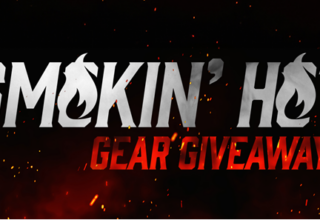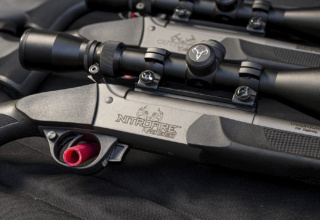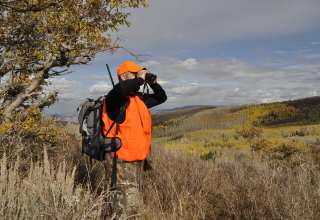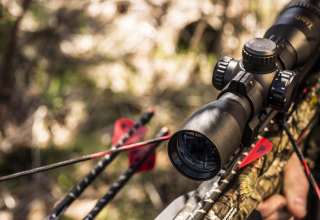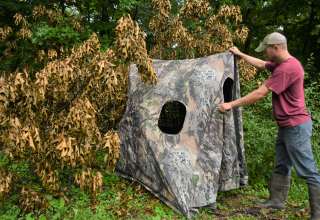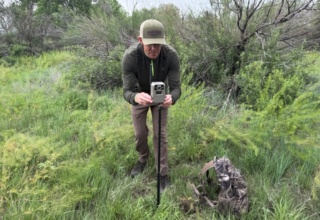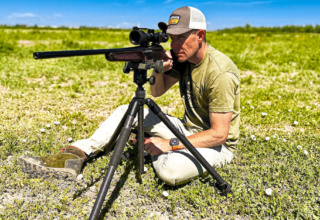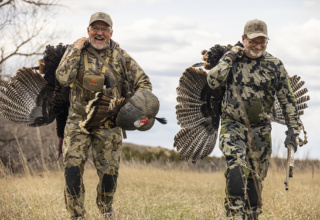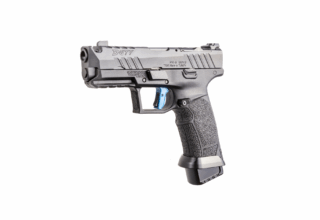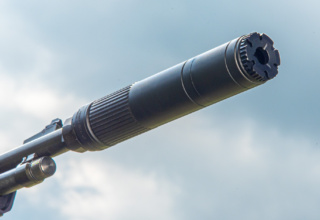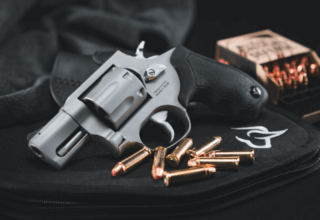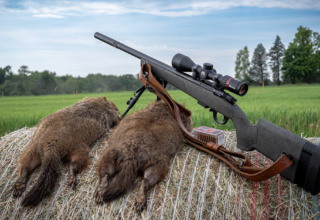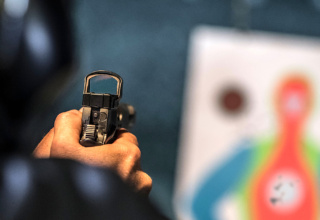Muzzleloading technology has greatly increased over the years to the point that muzzleloaders now rival center-fire rifles for accuracy at modest range. Bullets, primers, and powders have also played a part in extending effective range and tightening bullet groups. These developments, along with a greater interest in long-range shooting from hunters and shooters, prompt the question: In a hunting situation, how far is too far?
More than Technology
 Most rifles, crossbows, and compound bows can out-perform their operator. Take Chris Kyle for example. Known as The American Sniper, he reportedly killed an insurgent at 2100 yards using a Remington 700 bolt action rifle chambered in .300 Winchester. Because he could perform such Herculean feats, doesn’t meant that every deer or elk within a mile is fair game.
Most rifles, crossbows, and compound bows can out-perform their operator. Take Chris Kyle for example. Known as The American Sniper, he reportedly killed an insurgent at 2100 yards using a Remington 700 bolt action rifle chambered in .300 Winchester. Because he could perform such Herculean feats, doesn’t meant that every deer or elk within a mile is fair game.
Muzzleloading is even more demanding than other shooting forms because the operator (you) control so many variables. You may have the perfect rest, an ideal trigger pull, and yet still miss the target because of a loading abnormality. Likewise, poor powder management may pop a cap instead of sparking ignition.
How Far is too Far… FOR YOU?
If you hunt in the Great Plains, the Mid-west, or Texas, today’s muzzleloading gear can be effective at 200 yards and beyond. Traditions, for example, sells rifles specifically designed for long range shooting. The Vortek Strikefire LDR is built with a 30-inch barrel to facilitate maximum powder burn, and heightened velocity. However, long range accuracy requires more than technology. Even with the best equipment, muzzleloading is a complicated process and one error or omission can be trouble.
Control the Variables
If your goal is to develop a load that’s effective at maximum range, begin with ultra-consistent performance at close range. You can and should develop a 200-yard performer at 50 yards. Begin with a bench rest, shooting device, and whatever it takes to focus purely on the physical mechanics of the rifle eliminating as many shooter variables as possible.
Muzzleloading performance is mathematically predictable. If you can shoot a one-inch group at 50 yards, expect a four-inch group at 200, four times the distance. A true long-range rifle should print holes that touch at 50 yards. Once you can shoot five shots that touch, you are ready to take the next step- honing your shooting skills in hunting situations.
Troubleshooting
 If you can’t get your muzzleloader to perform at an optimal level, experiment with various powder charges and bullet combinations. Many centerfire reloaders stop by a range after work and spend 20-30 minutes shooting the previous evening’s work. Patience and careful experimentation is important to reach an optimal load.
If you can’t get your muzzleloader to perform at an optimal level, experiment with various powder charges and bullet combinations. Many centerfire reloaders stop by a range after work and spend 20-30 minutes shooting the previous evening’s work. Patience and careful experimentation is important to reach an optimal load.
Muzzleloaders can use this same process, testing their rifle and shooting components over time to develop the optimal bullet/power combination. Also, develop shooting habits that allow your efforts to sustain results. For example, begin with a clean barrel and clean between shots. You can’t expect a bullet from a clean barrel to perform the same as a third shot without cleaning.
Use a piece of electrical tape to mark the ramrod so that you seat a bullet in the same position each time. Once done, the tape should be flush with the muzzle. As you experiment with varying amounts and kinds of powder, you will need to change this mark, the reason for the tape.
How Much Powder
 The kind and amount of powder will be a significant accuracy issue. At first blush it may seem like more is better, yet that isn’t necessarily true. When the first three-pellet (150 grain) magnum rifles were developed, it seemed natural to use the maximum three-pellet charge. However, an industry staff person who had data on hundreds of tests told me that 110 grains of loose powder maximized performance. Additionally, high powder charges often lead to increased barrel fouling which precipitates difficult reloading. Experimentation will tell you how much powder yields the most accuracy.
The kind and amount of powder will be a significant accuracy issue. At first blush it may seem like more is better, yet that isn’t necessarily true. When the first three-pellet (150 grain) magnum rifles were developed, it seemed natural to use the maximum three-pellet charge. However, an industry staff person who had data on hundreds of tests told me that 110 grains of loose powder maximized performance. Additionally, high powder charges often lead to increased barrel fouling which precipitates difficult reloading. Experimentation will tell you how much powder yields the most accuracy.
Hodgdon just introduced FireStar Triple 7, a new line of muzzleloading 30-grain pellets that have an irregular shape for a more compete powder burn. A better burn results in the full potential of the charge and less fouling.
The Human Factor
Once you can deliver that overlapping group at 50 yards, you are ready to tackle the human element. Shooting refinement will improve with breathing, trigger execution, aiming, the proper rest, and other shooting skills. When the science is over, the fun begins.
- Long Range Hunting - January 9, 2019
- Travel Smarter with Crossbows - November 24, 2018
- Portable Ambush Blind – The NAP Mantis - September 7, 2018


